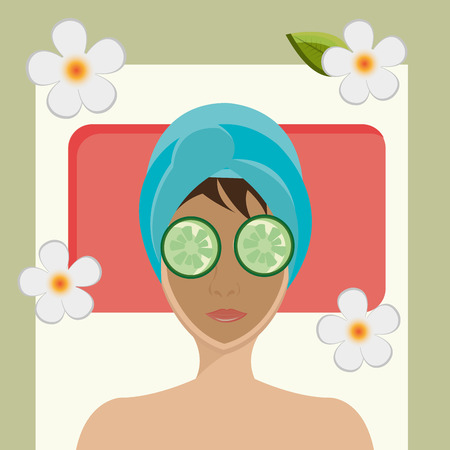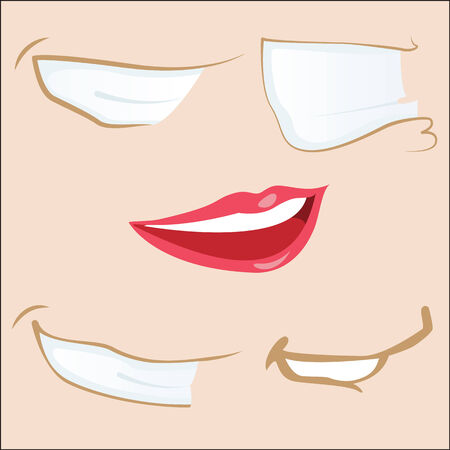1. What Is a Chemical Peel?
A chemical peel is a skin treatment that uses a special solution to remove dead skin cells and promote new cell growth. It helps improve the appearance of the skin by reducing fine lines, acne scars, hyperpigmentation, and uneven texture.
How Do Chemical Peels Work?
Chemical peels work by applying an acid-based solution to the skin, which causes controlled exfoliation. This process encourages the shedding of damaged outer layers, revealing smoother, healthier-looking skin underneath. Depending on the type of peel used, the depth of exfoliation can vary from superficial to deep.
Types of Chemical Peels
There are three main types of chemical peels, each designed for different skin concerns and depths of exfoliation:
| Type | Description | Common Ingredients | Best For |
|---|---|---|---|
| Superficial Peel | Mildest form; only removes the outermost layer of skin. | Alpha hydroxy acids (AHAs), Beta hydroxy acids (BHAs) | Minor discoloration, mild acne, dull complexion |
| Medium Peel | Penetrates deeper into the skin to target more noticeable imperfections. | Trichloroacetic acid (TCA), Glycolic acid | Fine lines, acne scars, moderate pigmentation issues |
| Deep Peel | The most intense peel; reaches deeper layers of skin for dramatic results. | Phenol, High-concentration TCA | Deep wrinkles, severe sun damage, significant scarring |
Benefits of Chemical Peels
Chemical peels offer a range of benefits for skin rejuvenation:
- Smoother Skin: Removes dead skin cells and promotes collagen production for a softer texture.
- Reduced Fine Lines and Wrinkles: Helps minimize signs of aging by encouraging new cell growth.
- Even Skin Tone: Reduces dark spots, hyperpigmentation, and sun damage.
- Acne Treatment: Helps unclog pores and reduce breakouts by controlling oil production.
- Brighter Complexion: Enhances skin radiance by removing dull outer layers.
Who Can Benefit from a Chemical Peel?
Chemical peels are suitable for many people looking to improve their skin’s appearance. However, they may not be ideal for individuals with very sensitive skin or certain medical conditions. Its always best to consult with a dermatologist or skincare professional before undergoing a peel to ensure its right for your skin type and concerns.
Is a Chemical Peel Right for You?
If youre considering a chemical peel, think about your skincare goals and any underlying conditions you may have. The right type of peel will depend on your specific concerns and desired results. A consultation with a licensed professional can help determine the best approach for your unique needs.
This introduction covers the basics of what chemical peels are and how they work. In the next section, well explore how to prepare for a chemical peel to achieve the best results.
2. Types of Chemical Peels
Chemical peels come in different strengths and formulations, each designed to target specific skin concerns. Understanding the differences between superficial, medium, and deep chemical peels can help you choose the right one for your skin type and goals.
Superficial Peels
Superficial peels, also known as light peels, are the mildest type of chemical peel. They primarily exfoliate the outermost layer of the skin (epidermis) and require little to no downtime.
Common Ingredients:
- Alpha Hydroxy Acids (AHAs) like glycolic acid and lactic acid
- Beta Hydroxy Acids (BHAs) like salicylic acid
- Mandelic acid
Best For:
- Mild discoloration
- Dull or rough texture
- Clogged pores and mild acne
- Sensitive skin types
Downtime:
No significant downtime; minor redness or peeling may occur for a day or two.
Medium Peels
Medium-depth peels penetrate deeper into the skin, reaching the middle layers of the dermis. These peels are more effective at treating moderate skin concerns but require some recovery time.
Common Ingredients:
- Trichloroacetic Acid (TCA)
- A combination of TCA with AHAs or BHAs
- Jessner’s solution (a mix of lactic acid, salicylic acid, and resorcinol)
Best For:
- Fine lines and wrinkles
- Sundamage and hyperpigmentation
- Mild acne scars
- An uneven skin tone or texture
Downtime:
Mild to moderate peeling lasting about 5–7 days. Skin may be red and sensitive during healing.
Deep Peels
Deep chemical peels provide the most dramatic results by penetrating several layers of the skin. These peels are performed by professionals under medical supervision due to their intensity.
Common Ingredients:
- Phenol (Carbolic Acid)
- A high concentration of TCA
Best For:
- Deep wrinkles and severe sun damage
- Persistent hyperpigmentation or melasma
- Surgical or severe acne scars
- Tightening sagging skin
Downtime:
A longer recovery period of 2–3 weeks is required. Redness and swelling are common, with significant peeling as new skin emerges.
Chemical Peel Comparison Chart
| Chemical Peel Type | Main Ingredients | Treats | Downtime |
|---|---|---|---|
| Superficial Peel | AHA (Glycolic, Lactic), BHA (Salicylic), Mandelic Acid | Dullness, mild acne, minor discoloration, rough texture | No downtime to minimal peeling for 1–2 days |
| Medium Peel | TCA, Jessner’s Solution, AHA/BHA blends | Sundamage, fine lines, acne scars, uneven tone/texture | Mild to moderate peeling for 5–7 days |
| Deep Peel | Phenol, High-concentration TCA | Severe wrinkles, deep scars, heavy discoloration, loose skin tightening | Around 2–3 weeks of recovery with significant peeling |
Selecting the right chemical peel depends on your skin concerns and how much downtime youre willing to manage. If youre unsure which peel is best for you, consult a dermatologist or skincare professional for personalized recommendations.

3. Who Is a Good Candidate?
Chemical peels can be an excellent option for many people looking to improve their skin, but they’re not suitable for everyone. Whether or not you’re a good candidate depends on several factors, including your skin type, concerns, and any contraindications.
Factors That Determine If a Chemical Peel Is Right for You
✔ Skin Types That Benefit from Chemical Peels
Chemical peels work well for most skin types, but certain formulations are better suited for specific concerns. Here’s a general guideline:
| Skin Type | Best Peel Type | Considerations |
|---|---|---|
| Oily & Acne-Prone | Salicylic Acid Peel | Helps unclog pores and reduce breakouts. |
| Dry & Sensitive | Lactic Acid Peel | Mild and hydrating, less likely to cause irritation. |
| Aging & Sun-Damaged | TCA or Glycolic Acid Peel | Improves fine lines, wrinkles, and uneven tone. |
| Darker Skin Tones | Mandelic Acid or Low-Concentration Peels | Avoids excessive pigmentation issues. |
✔ Common Skin Concerns That Chemical Peels Address
If you have any of the following skin concerns, you may benefit from a chemical peel:
- Acne & Acne Scars: Helps clear breakouts and fade post-acne marks.
- Hyperpigmentation & Dark Spots: Reduces discoloration caused by sun damage or melasma.
- Dull Skin & Uneven Texture: Reveals brighter, smoother skin by removing dead cells.
- Fine Lines & Wrinkles: Stimulates collagen production for younger-looking skin.
✖ Who Should Avoid Chemical Peels?
Chemical peels are generally safe, but some conditions may make them unsuitable. You should avoid chemical peels if you:
- Have Active Skin Infections: Conditions like cold sores or bacterial infections may worsen with a peel.
- Suffer from Severe Rosacea or Eczema: Peels may trigger irritation or flare-ups in sensitive skin.
- Tend to Develop Keloids: If you have a history of raised scars, chemical peels might not be ideal.
- Aren’t Willing to Follow Aftercare Instructions: Proper post-peel care is crucial for optimal results.
- Took Isotretinoin (Accutane) Recently: Wait at least six months before considering a peel to avoid excessive irritation.
The Bottom Line: Consult a Professional First!
If youre unsure whether a chemical peel is right for you, its always best to consult with a dermatologist or licensed esthetician. They can assess your skin type and concerns to recommend the safest and most effective treatment tailored to your needs.
4. What to Expect During the Procedure
Getting a chemical peel can feel intimidating if you don’t know what to expect. Here’s a step-by-step breakdown of the process, from preparation to immediate aftercare.
Step 1: Preparing for Your Chemical Peel
Your skincare professional will guide you on how to prepare your skin before the treatment. Proper preparation ensures better results and minimizes potential side effects.
Common Pre-Treatment Instructions:
| Do | Dont |
|---|---|
| Use gentle cleansers and moisturizers | Exfoliate or use harsh scrubs |
| Avoid excessive sun exposure | Get a tan or use tanning beds |
| Stay hydrated and maintain a healthy skincare routine | Use retinoids or strong acids unless advised |
| Follow any instructions given by your provider | Undergo other facial treatments right before your peel |
Step 2: Application Process
The actual procedure is relatively quick and typically takes about 30 minutes. Here’s what happens during your appointment:
The Chemical Peel Process:
- Cleansing: Your skin will be thoroughly cleansed to remove any oils, dirt, or makeup.
- Prepping the Skin: A prepping solution may be applied to ensure even penetration of the peel.
- Chemical Application: The chosen peeling solution will be applied evenly across your skin. You may feel a slight tingling or mild burning sensation.
- Dwell Time: Depending on the type of peel, it will be left on for a specific amount of time.
- Neutralization (if required): Some peels need to be neutralized with a special solution, while others self-neutralize over time.
- Cleansing & Protection: The peel will be removed (if necessary), and soothing products such as moisturizers and sunscreen will be applied.
Step 3: Immediate Aftercare
Your skin will be more sensitive right after the procedure, so taking proper care is essential. Follow these aftercare steps to ensure optimal healing and results.
Post-Treatment Care Tips:
- Avoid touching your face: Your skin is delicate, so refrain from picking or scratching.
- Mild Cleansing: Use a gentle cleanser as instructed by your provider.
- No Harsh Products: Avoid exfoliants, retinoids, and strong acids for at least a week.
- Sunscreen is a Must: Always wear SPF 30+ to protect your healing skin from UV damage.
- No Intense Workouts: Sweating can irritate freshly treated skin, so skip strenuous activities for a few days.
The healing process varies depending on the strength of your peel. Mild peels may cause minimal redness and flaking, while deeper peels may involve more noticeable peeling over several days. Always follow your provider’s instructions for the best results!
5. Post-Peel Care and Recovery
Taking care of your skin after a chemical peel is just as important as the treatment itself. Proper aftercare helps ensure the best results while minimizing discomfort and potential side effects. Here’s what you need to know about post-peel recovery.
Essential Skincare Tips
After a chemical peel, your skin will be more sensitive than usual. Following these skincare tips can help speed up healing and prevent irritation:
- Keep Your Skin Hydrated: Use a gentle, fragrance-free moisturizer to keep your skin hydrated and reduce dryness.
- Avoid Harsh Products: Stay away from exfoliants, retinoids, and strong acids until your skin has fully healed.
- Use Gentle Cleansers: Opt for a mild, non-foaming cleanser that won’t strip your skin of moisture.
- Apply Sunscreen Daily: Your skin will be more vulnerable to sun damage, so wear a broad-spectrum SPF 30 or higher every day.
- No Picking or Peeling: Let the peeling process happen naturally to avoid scarring or irritation.
Expected Downtime
The amount of downtime depends on the type of peel you received. Here’s a general timeline of what you can expect:
| Chemical Peel Type | Peeling Duration | Total Recovery Time |
|---|---|---|
| Light Peel (Superficial) | Mild flaking for 2-5 days | About 1 week |
| Medium Peel | Moderate peeling for 5-7 days | About 2 weeks |
| Deep Peel | Intense peeling for 7-14 days | A few weeks to months |
Managing Peeling and Sensitivity
Your skin may feel tight, dry, and sensitive in the days following your peel. Here are some ways to manage discomfort:
- Avoid Hot Water: Wash your face with lukewarm water to prevent further irritation.
- Soothe with Cool Compresses: If you experience redness or discomfort, a cool compress can provide relief.
- Avoid Sweating: Skip intense workouts and saunas for a few days to prevent irritation.
- No Makeup (If Possible): Give your skin time to heal by avoiding makeup for at least 24-48 hours post-peel.
- If in Doubt, Ask Your Provider: If you experience excessive redness, burning, or prolonged irritation, consult your skincare professional.
The key to a successful recovery is patience and gentle care. By following these aftercare steps, youll help your skin heal properly and achieve the glowing results youre looking for!
6. Potential Risks and Side Effects
Chemical peels can work wonders for your skin, but like any cosmetic procedure, they come with potential risks and side effects. Understanding these risks can help you make an informed decision and take the right precautions for a safe and effective peeling experience.
Common Side Effects
Most people experience mild side effects after a chemical peel, which typically subside within a few days. These include:
- Redness: Your skin may appear red or flushed, similar to a mild sunburn.
- Dryness and Peeling: Expect some flaking or peeling as your skin sheds dead cells.
- Sensitivity: Your skin may be more sensitive to sunlight and skincare products.
- Mild Swelling: Some people experience slight puffiness, especially after deeper peels.
Rare Complications
While uncommon, certain complications can occur, especially if aftercare instructions aren’t followed properly. These include:
| Complication | Description |
|---|---|
| Infection | Bacterial or fungal infections can develop if the skin isn’t kept clean during healing. |
| Scarring | Improper care or picking at peeling skin can lead to long-term scars. |
| Hyperpigmentation | Darker patches of skin may appear, especially in people with darker skin tones. |
| Hypopigmentation | Lighter spots may develop, particularly after deep peels. |
| Allergic Reactions | Irritation, rash, or itching due to sensitivity to peel ingredients. |
How to Minimize Risks
The good news is that most risks can be minimized with proper preparation and aftercare. Follow these tips for a safe chemical peel experience:
Before the Peel
- Avoid excessive sun exposure for at least a week before treatment.
- Stop using retinoids or exfoliating products as directed by your provider.
- If you have a history of cold sores, inform your provider—they may prescribe antiviral medication.
After the Peel
- Keep your skin moisturized and avoid picking at peeling areas.
- Avoid direct sun exposure and always wear SPF 30+ sunscreen.
- Avoid harsh skincare products until your skin fully heals.
- If you notice signs of infection or unusual irritation, contact your provider immediately.
Chemical peels can be an excellent way to refresh your skin when done correctly. By understanding potential risks and following proper aftercare, you can enjoy smooth, radiant results with minimal complications.


